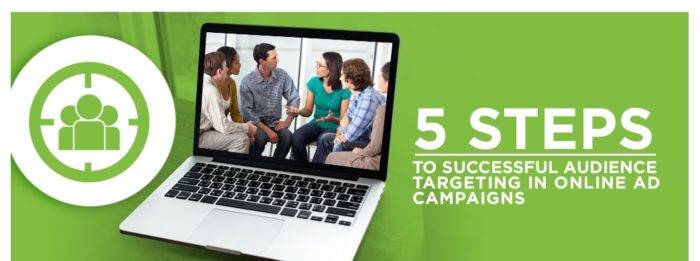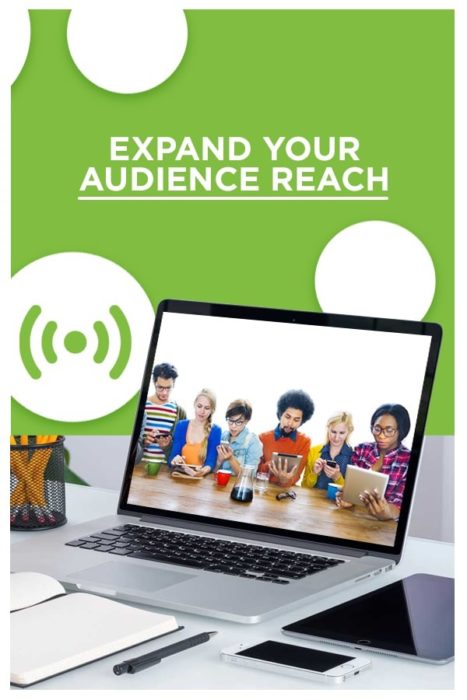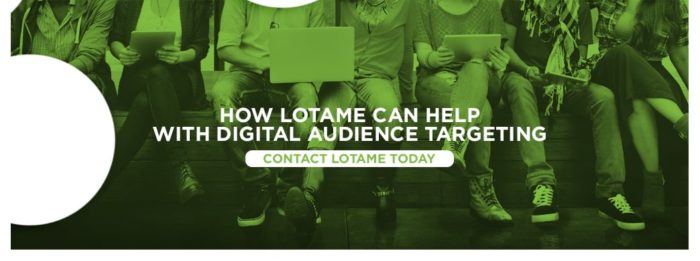
Jump to:
- Pixel Your Campaigns
- Identify Your Clickers and Converters
- Personalize Your Messaging
- Produce Quality Content
- Expand Your Audience Reach
Marketers today face many challenges, no matter their industry. With competition coming from all angles and pervasive consumer “ad blindness,” brands must find ways to reach niche audiences with the right messaging at the right time to make their online ad campaigns more successful.
To accomplish this, you need to figure out who is most likely to complete your desired action, whether that’s making a purchase or providing you with their contact information. You can then focus on this group of people with a process called audience targeting.
Without audience targeting, you’re guessing — sending your ads out to a broad audience and hoping the right people see it. That approach can result in a lot of wasted ad dollars. Audience targeting allows you to, instead, base your decisions on data to get a better return on your investments.
So, how can you get started with audience targeting and use it to improve your online ad campaigns? Here are five steps for successful audience targeting.
1. Pixel Your Campaigns
The first step of enhancing your audience targeting is gathering information about your existing audience. To do this, place a pixel on your online properties, including your websites and campaigns, to collect data about your audience. Pixels are small bits of code you can put on a webpage to gather information about visitors’ online behaviors. The pixels, which are invisible unless you’re viewing the source, allow your properties to read and place cookies, which provide you with anonymous information about your sites’ visitors.
Improve Your Audience Targeting Today
Your marketing technology generates pixels, which you then insert into the code of your website. The pixel will then start collecting data you can access using your marketing technology. Pixeling is one of the methods Lotame uses to collect first-party and third-party data. Whether you are working with a data collaboration platform (DCP), a demand-side platform (DSP) or a data exchange, talk to your vendor and make sure you are gathering all the useful information you can.
2. Identify Your Clickers and Converters

Improve Your Audience Targeting Today
Pixeling your campaigns enables you to collect detailed information about who is engaging with them. You can see who clicked on your ads and what they did when they arrived on your website. You can also see whether they converted.
Using this data, you can build an audience in your data collaboration platform or DSP of “clickers” and “converters.” These audience members are the ones who are most likely to become your customers. Since they’re the most likely to bring in revenue, you’ll want to focus your future campaigns on them and other people like them.
Once you’ve been collecting this audience data for a few weeks, you should have enough information to begin diving into analytics regarding your audience.
Analyzing your audience will give you valuable insights into who your audience is. You can get information about their demographics, location, interests, and behaviors. This demographic information can include their age, gender, marital status, income level, occupation and much more. You can learn what subjects they’re interested in, whether that’s sports, politics, fine dining or beauty products. You might also get details about their beliefs, values, preferences, and behaviors, such as their online shopping habits.
Gathering this information is crucial because it enables you to target your ads more precisely and can even prevent you from wasting ad spend on the wrong audiences. Basing your targeting decisions on data is much better than merely guessing. You probably have a good idea of who your audience is, but some of the details may surprise you. There are also some things you wouldn’t know about your audience based on your interactions with them alone.
For example, you might think your target audience is soccer moms, so you focus your targeted digital marketing on women ages 25 to 44. The audience profile report, however, may tell a different story. Maybe, instead, those most likely to click on your ads are people who are interested in financial products.
You can use whatever insights you glean from pixeling for your next campaign. Instead of targeting soccer moms, try targeting a financial audience the next time around to see whether your clickthrough rate increases.
3. Personalize Your Messaging
In digital marketing, one size doesn’t fit all. Not every lead responds to the same messages. Any campaign aims to get the most bang for your buck, so you need to send the kinds of messages that resonate most with your audience to drive leads or sales. You can use the insights you obtain from your audience data to tailor your messaging to your audience’s preferences and interests. That can lead to much higher levels of engagement compared to merely creating a generic ad that would apply to a broad audience.
Improve Your Audience Targeting Today
For example, if you learned those most likely to click on your ads are women who love dogs, to resonate with your audience, you may want to consider including dogs in your next marketing campaign. Even if your product doesn’t relate to dogs, including them in an ad could boost engagement.
Through analyzing your audience, you might find different segments of customers are more likely to buy different products or respond to varying offers. Say you’re selling cloud-based business software. You might discover companies in the retail industry respond best to a free trial, while those in the construction industry are more likely to respond to a demo from a salesperson. When serving ads to those two different groups, you can use different calls to action based on these preferences.
Thanks to the rise of mobile advertising, marketers have even more targeting options. You can, for instance, use geographic location targeting, or geo-fencing, to send ads to people based on their location. You can include information about your nearest store, offer them special coupons when they’re near one of your stores or suggest products they may need based on their location. For example, you could serve an advertisement for sunglasses to someone at the beach and an ad for hand warmers to someone on a ski resort.
These are just a few examples of ways in which you can personalize your ad campaigns. You can customize them based on nearly anything you find out from your audience data. You can use audience insights to guide your overall campaigns and create different versions of ads for different audience segments. Segmenting your audiences in this way can significantly improve campaign performance. Segmented email campaigns, Mailchimp found, garnered 14.31 percent more opens and 100.95 percent more clicks. Audience insights also enable you to see which prospects are most likely to convert, allowing you to focus your efforts on them.
4. Produce Quality Content

Improve Your Audience Targeting Today
Targeting your ads can significantly increase your chances of connecting with future customers, but you also need to produce high-quality content. Poorly designed campaigns and ads likely won’t spark much interest, even if you target them to the right people. The competition for people’s attention is fierce, so you need ad content that stands and delivers your message efficiently.
To make your ads more engaging, use storytelling. In the past, most ads focused on the product and urged customers to use it. Now, marketers more often concentrate on the customers and how the product will help them meet a need. Show how your product fits into your customer’s story. For example, will your product help your customers be their best selves by getting into shape? Will it help them save time and take control of their busy lives?
You should also focus on the solution your product provides, rather than the problem it solves. If you do this well, customers will understand immediately how your product will help improve their lives. For example, if you’re advertising a productivity tool, focus on how much more someone can get done by using your tool, not the fact that they’re wasting time.
Ads are also becoming more visual. In a recent survey of digital marketers, 69 percent said visuals were “very important” or an “absolute necessity” for their marketing strategies. That’s because visual content is engaging and helps quickly convey your message to customers. Try including pictures, videos, and infographics in your content to boost engagement.
Ultimately, you want your consumers to not even realize your ad is an ad because it is so engaging and relevant to them. If you target your ads right, they’ll be excited to click on it. That’s when you know you’ve given the right person the message at the right time.
5. Expand Your Audience Reach

Improve Your Audience Targeting Today
Once you have information about the attributes of your existing audience, you can use that information to expand your audience and grow your business.
Lookalikes
One way to expand your reach is through lookalike audiences. These audiences consist of new people who are likely to be interested in your product because they are similar to your existing customers. You can base your lookalike audience on a variety of sources, but the clickers and converters mentioned above would be an excellent place to start.
To build lookalike audiences, purchase third-party data from a data provider. You can then target the users within that third-party dataset who have characteristics similar to those of your existing audience. By targeting people who “look” or “act” like your digital marketing target audience, you focus your ad spend on those most likely to engage with your products and services.
Retargeting
Even if you expand your audiences and target your ads perfectly, most prospects still aren’t going to convert — at least not right away. That’s normal and expected, because many of them may still be in the early stages of their purchase journeys. They might be in the process of researching their options and haven’t committed to making a purchase yet. A prospect isn’t lost to you, though, if they don’t convert on the first click. You can bring them back to your site with retargeting.
Retargeting enables you to deliver ads to people who visited your website but didn’t convert. These ads aim to bring them back to the site to convert. You can tailor these ads based on the actions they took while on your site. If they left an item in their shopping cart but didn’t purchase it, for example, you can offer them a discount on that item.
Google also allows you to expand your audience based on your retargeting list. Using the Similar Audiences function for audience targeting in Adwords, you can tell Google to find new users similar to those in your retargeting list. According to Google, this tactic typically leads to a 41 percent increase in conversions.
How Lotame Can Help With Digital Audience Targeting

Audience targeting helps you get your ads to the right people and tailor your campaigns to your audience’s preferences, so your ads perform better. Through audience targeting, you can spend less on your campaigns and get more conversions.
To accomplish this, though, you need the right tools. Audience targeting depends on data, and you need to be able to collect, organize and activate your data efficiently.
Lotame’s end-to-end data collaboration Spherical, enables digital marketers to onboard, connect, enrich and activate first-party, second-party or third-party data to get a holistic view of your audience. You can create audience segments within the Spherical platform and use our analytics tools to uncover new and valuable insights about them. Then, you can use those insights to improve your campaigns.
Are you using your data to its fullest potential? Contact Lotame today to learn more about how our tools can help you improve your online ad campaigns.